Forward Versus Trailing P/E Ratios for Shorting Stocks
Executive Summary
- In March of 2021, there are many stocks with very high P/E ratios.
- However, the story changes with the forward versus trailing P/E ratio.

Introduction
This article is designed to analyze how to benefit from the overheated US stock market.
Our References for This Article
If you want to see our references for this article and other related Non Status Quo articles, see this link.
The Current Situtation
In some parts, the currently extremely high stock market is due to the lack of other places to invest money in the economy, low-interest rates, and the US government greatly increasing the money in circulation to account for the reduction in business activity brought about by the Coronavirus.
This has led many companies to have high P/E ratios, particularly trailing P/Es. One is Tesla, with close to a 1000 trailing P/E.
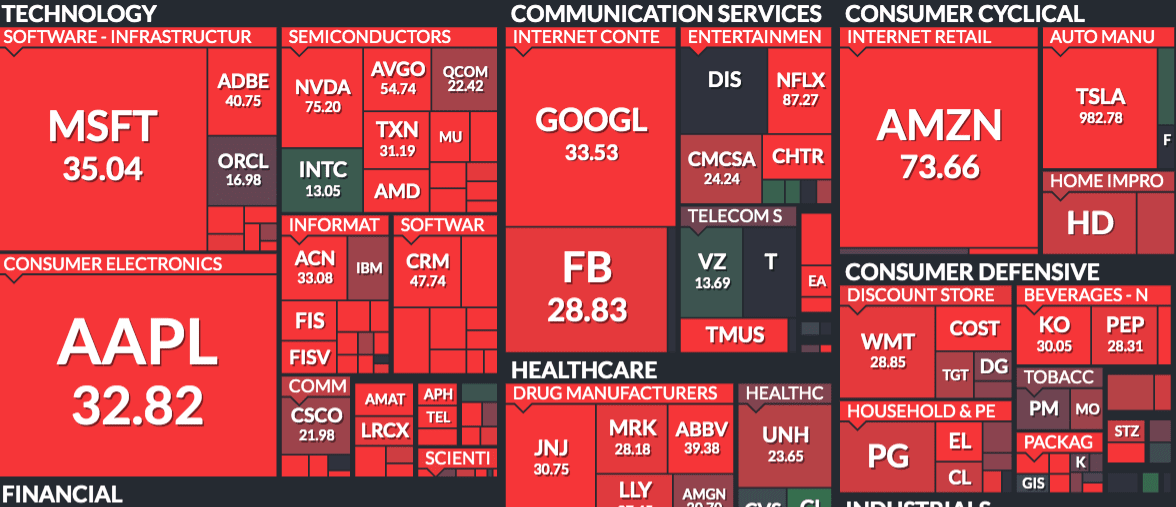
Notice that no other stock is close to Tesla’s trailing PE of close to 1000.
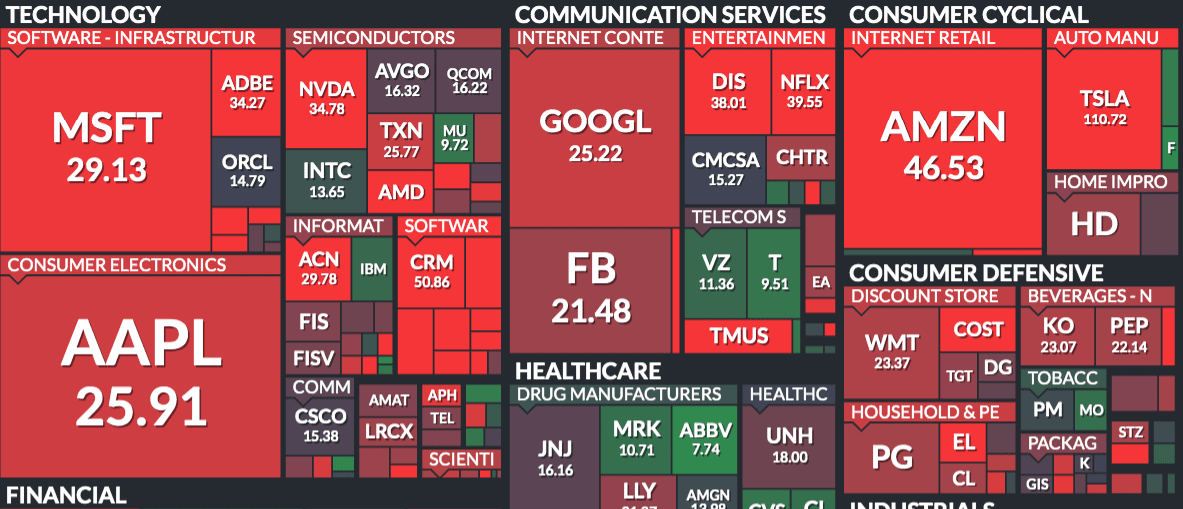
However, the picture changes when the future PE is used, as it drops to 100.
Trailing PE Ratio = Average of Last 4 Quarters
Forward PE Ratio = Average of Next Forecast 4 Quarters
Price to Sales Ratio
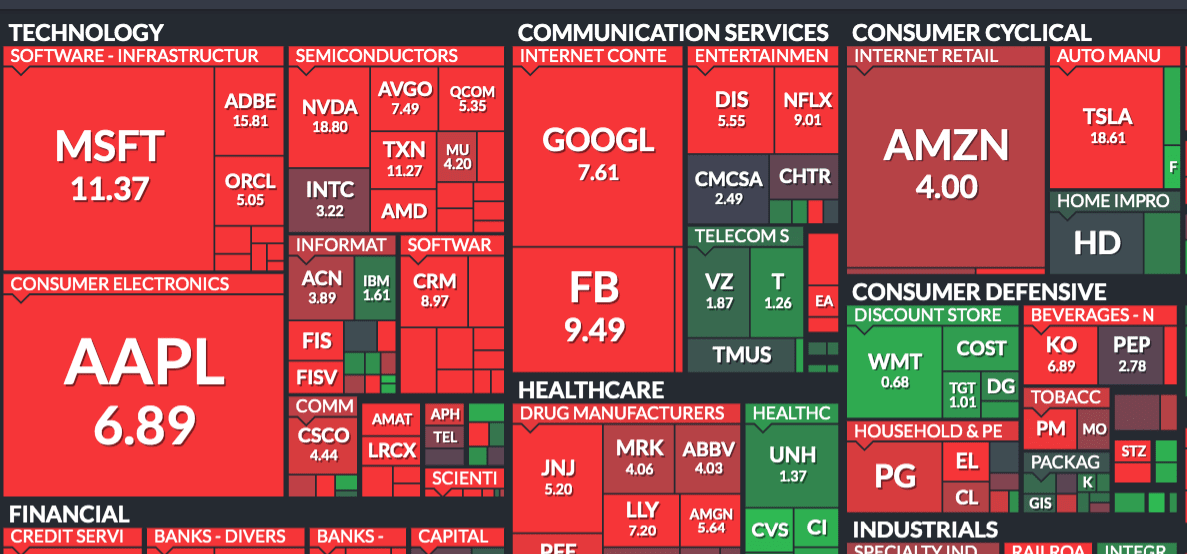
Notice that when it comes to price to sales, Tesla comes down quite considerably.
Price to Book Ratio
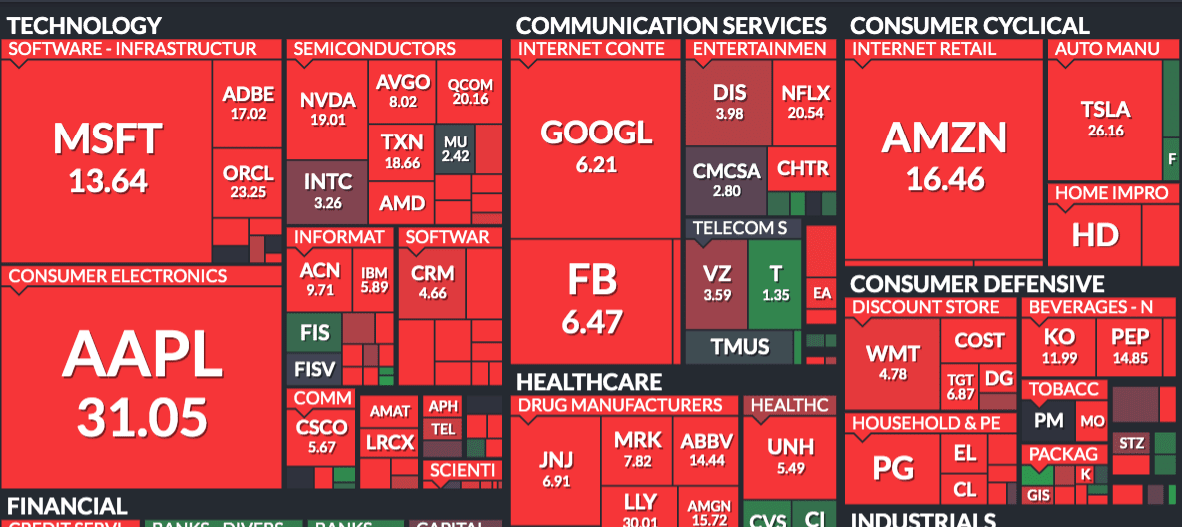
Notice that the price to book ratio, Tesla is less than Apple – which is at $31.
This brings up why Tesla does such a poor job of using its assets to develop profits. One reason for this is that Tesla is not efficient. They are not good at mass production, which is the only way to become profitable in manufacturing — unless you are a specialty provider like Ferrari, which is not mass-produced but sells to a very exclusive clientele at an enormous cost per unit. Secondly, Tesla is not a new company. As the years pass, Tesla is still not able to drive profits from its operations.
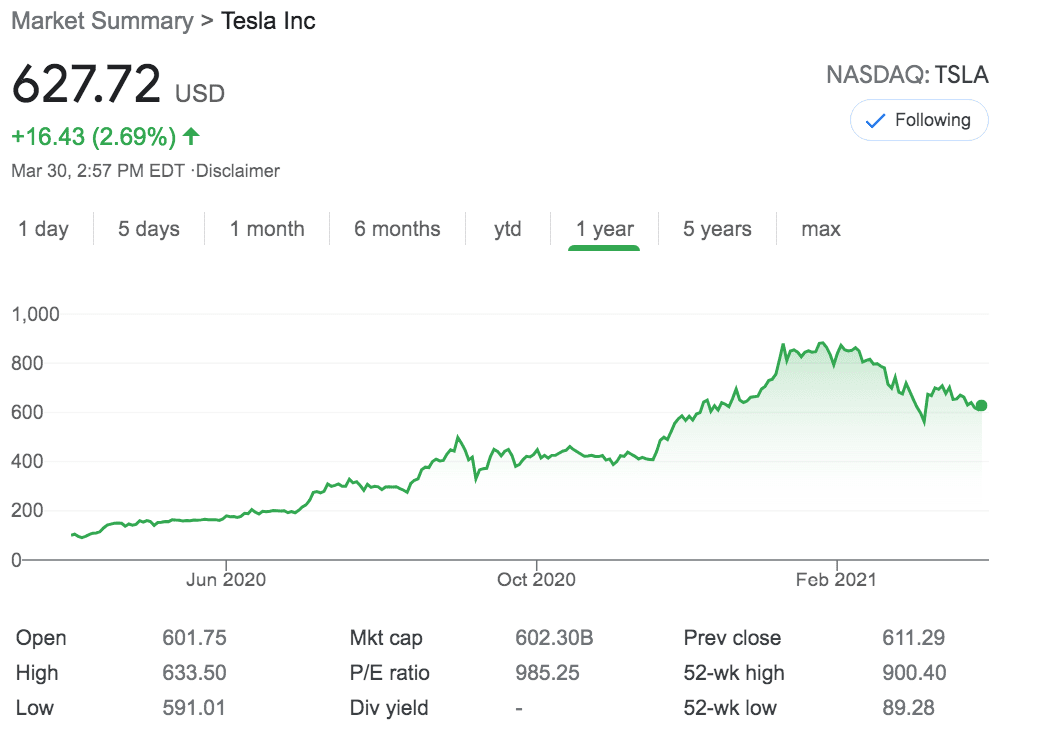
Tesla is off of its all-time high of $900.
However, here is the argument against using the trailing PE for Tesla.
This video and the following video make the argument Tesla is a good value.
This video is essentially a textbook argument for why there is a bubble. However, the video maker does not realize why. This falls into the category of “this time is different,” which is said at the top of all bubbles.
Faking the 2021 1st Quarter Earnings?
For some reason, this article did not get much commentary for its impact on the 1st quarter of 2021. However, this is too basic of an error to be something that is not premeditated on the part of Tesla.
Tesla double-charged some customers for new cars, leaving them desperate for refund details.
Two other customers, whose identities are known to CNBC but who asked to remain anonymous for privacy reasons, said they also experienced duplicate debit charges from Tesla, leaving them in distress. One of them faces overdraft fees and looming finance charges on credit card bills due at the end of the month.
The cost of any new Tesla is not trivial. For the affected buyers interviewed by CNBC, amounts taken from their accounts ranged from $37,000, the price of a base version 2021 Tesla Model 3 sedan, to around $71,000, the price of a 2021 Tesla Model Y crossover SUV loaded with premium options.
Tesla did not immediately reply to a request for comment for more information. CNBC asked the company how many customers experienced the duplicate charges, how such problems might impact its end-of-quarter delivery numbers (which it is expected to report at the start of April), how quickly the company can refund owners and what customers should do in this situation.
Slattery eventually drove to the Tesla Burbank, California, store and service center to speak with sales and delivery staff in person.
He says, “They told me to call my bank and have my bank reverse the charge. That was not acceptable. When you debit more than $50,000 and tell a customer to solve it on their own? I kept pushing.”
Five days later, Slattery is still awaiting a refund or any commitment, in writing, that he will be refunded and by what date.
He says he will refuse to accept delivery of the new, 2021 Model Y, which didn’t show up during the previously estimated delivery window until the refund is complete.
The stress comes at a horrible time for his family — they’re searching for a new home in another state, and any trouble with funds could impact their ability to bid on a house or secure a mortgage in a timely manner and at desirable a price or rate.
Slattery is hardly alone. He said a Tesla employee at the Burbank store and service center said, in his presence, that hundreds of customers were experiencing the same issue with duplicate charges.
While he’s still on board with electric cars and has no plans to abandon Tesla, Slattery says: “It’s hard to imagine sales and service getting worse. I had almost $53,000 unauthorized stolen from my bank account. And nobody, nobody has called me, emailed me, there’s no sense of urgency in resolving this.”
Meanwhile, his bank told him it could take a minimum of 10 days and up to 45 days potentially to get a refund processed on their end. And it would be faster to handle things through Tesla.
Such activity would greatly impact the quarterly earnings, as each double charge requires no extra costs. The second charge is 100% margin — as Tesla does not have to manufacture a 2nd car. Let us perform an estimate. Let us say that 350 people experienced this. And let us say the average amount double charges was $50,000. 350 * 50,000. That is $17.5 M. Tesla made $721 M in 2020 in profits or $180 M per quarter on average. This accounting trick could boost a 2020 quarter by 10%.
This looks to be a textbook way for Tesla to exaggerate its Q1 2021 earnings fraudulently. Not only are these charges highly suspicious, but by the time the refunds are processed, the company will be into the next quarter. With creative accounting, Tesla accountants may be able to make it appear that it never happened.
Bitcoin Profits
Elon Musk primed the Bitcoin bubble with a series of tweets and by indicating Tesla would begin accepting Bitcoin as payment. All of this was done after Tesla had taken a position in Bitcoin. It is reported that Tesla made $1 billion on its Bitcoin investment. Tesla would seem to want to reflect this in their profits. It would allow Tesla to show a massive increase in profitability if this is included. It will likely be disregarded, and Tesla will be able to sell the store of Tesla finally becoming much more profitable — even though it is from asset speculation — and not from operations.
Point#1: This video states that Tesla has stated it will not record the appreciation of its Bitcoin investment (in order to keep from paying taxes). This is legal as Tesla only needs to report to the government its gain when it has sold its Bitcoin investment.
Point#2: This video maker entirely misses out that Elon Musk was able to drive up the price of Bitcoin by endorsing it. Musk can drive up the price of anything just by tweeting that he likes it. All Tesla has to do is take a position in an asset, and then Musk announces that he is a fan of that item. Then that item will appreciate making Tesla look like an investment genius.
As Bitcoin is presently $58,000, it means that Tesla will sell you one of their higher-end cars for a single Bitcoin.
According to Kathy Wood, Bitcoin will rise to $500,000. If that were true, then a single Bitcoin could be used to purchase around above average 10 Teslas.
The top of a bubble is indicated when people begin making forecasts and are undifferentiated from institutionalized people by the state.
Conclusion
Tesla is very overvalued, and in my view, the forward P/E is an inflated forecast. The problem is shorting Tesla is not in the actual value of Tesla, but in the enormous headwind that Tesla has among investors who think “in Elon we trust.”